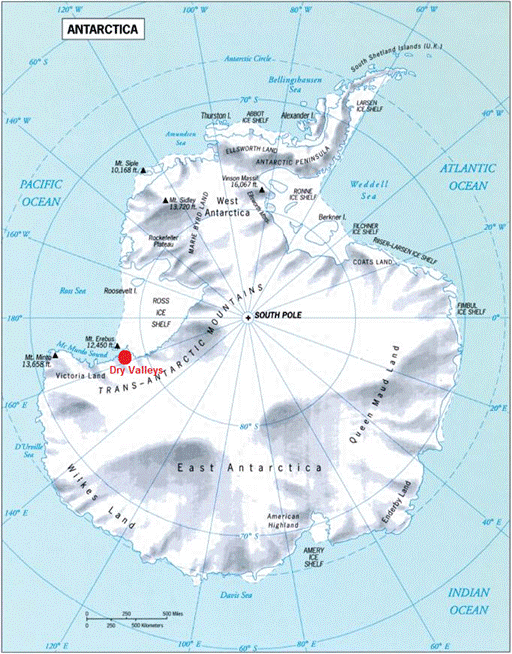High within the coldest and driest continent, Antarctica, lies what may be an environment too hostile to support life, according to a team of scientists from Canada and the United States. They reported finding no evidence of microbial life in the dry permafrost and underlying ice-cemented soil of University Valley, located 1700 meters above sea level in the McMurdo Dry Valleys of Antarctica, which is mostly snow-free and never gets above freezing (Journal of the International Society for Microbial Ecology, January 2016). The single drier place on Earth is generally considered to be the Atacama Desert in Chile. See also: Antarctica; Desert; Hyperaridity and the dry limits of life; Permafrost

The only sign of life found in the soil samples were dead or dormant microorganisms that are believed to have been blown in by the wind. Repeated attempts to culture microorganisms from the soil samples were unsuccessful. The researchers believe this is because the conditions in the perennially frozen soil are just too harsh and the available nutrients too scarce. See also: Microbial ecology
One of the reasons the scientist were looking for life in this area is its similarity to the permafrost observed in the northern polar region of Mars by the Phoenix mission. If the scientists have actually discovered a cold-dry limit of life on Earth, the chances of finding life as we know it on Mars are probably very slim. See also: Mars; Phoenix Mars mission





